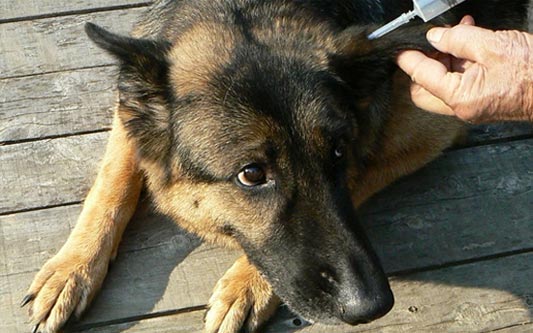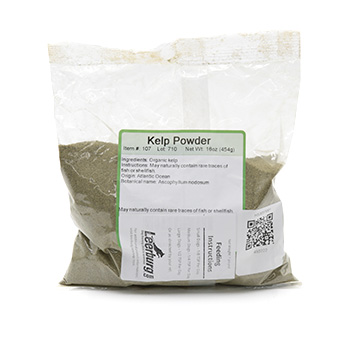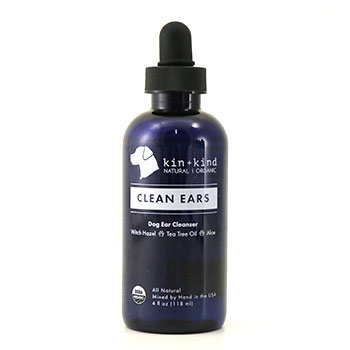Canine Ear Hematomas

I have been asked to write an article on canine ear hematoma, but I must preface with the statement that the following is not medical advice, and there is no financial remuneration. Despite the history of veterinary medicine having originated or evolved out of the practices of people who bred cattle, dogs, or other animals, there is a common catlike attitude among many vets (by that I mean “getting their backs up”) when experienced breeders or owners who are non-practitioners are asked about their experiences in animal care. Additionally, in some areas such as breeding and training, vets typically have far, far less experience and, thus, useful knowledge.
Hematomas are fluid-filled pockets on the inside of the earflap (pinna) caused by some trauma (forceful injury), which in the first place might be the result of an allergy, an infection, dogfight injury, being struck, or a foreign body such as dirt, yeast, a seed, mites. The fluid is a mixture of blood from tiny blood vessels (capillaries/arterioles/small veins), plus correlating pathways of the lymph system. Lymphatic fluid is clear (devoid of hemoglobin-pigmented red blood cells), has its own pathways through “tubes” and nodes as well as simply soaking or bathing much of the body's tissues. Unlike the cardiovascular system, the lymphatic system is not closed and has no central pump. Low-pressure movement of this fluid occurs when muscles contract and relax. Some of the lymph also drains into veins and thus returns to join the blood.
I was about to answer a query by a friend in dogs, when I thought perhaps I should be a bit more modern than usual and see if there was anything on the Internet that I should see, in the way of other opinions. The question was what to do about a hematoma, specifically on the ear. It is probably the number one reason for vet visits. With nearly eight decades of living and working with dogs, including breeding, handling, and judging, I've dealt with many such cases. Despite the usual veterinary approach of anesthesia and considerable cutting, my experience has taught me there is usually a far better way to treat these.
Of the instances and articles I found on the web, only one came close to the minimally-invasive methodology I've used many times: a “youtube” item by a “Doc Pawsitive” promoted something similar, but I still feel my technique is better. Instead of the slice-and-dice approach that most vets still use on the ear, my do-it-yourself approach requires only a large-bore hypodermic needle and a relaxed patient. If you have failed as a “doggy-daddy/mom” to train your pets to quietly lie still while you take care of their problems, then you deserve to help pay for the vet's Cadillac. Treatments vary widely, from use of leeches to “heroic” or major cutting, the latter almost always resulting in a “cauliflower ear” after the scalpel wounds heal.
The ear can be thought of as two layers of skin “pasted” together. Imagine what your arm would be if it had no bones or muscle, and practically no fat or blood vessels. It would be like a postal envelope before you put things in it and seal it. Well, that's how you should look at the ear: two layers—an outer and an inner—with so little between them that you normally don't think of it as an envelope capable of being puffed open. Of course, there are blood vessels, but they aren't given much thought until something happens.
That “thing” that happens so often to dogs is a trauma severe enough to cause rupture of some of the circulatory system's vessels. Most people think of veins and arteries, but there are also lymphatic pathways, and in my experience, hematomas often seem to have had as much clear lymph as corpuscle-containing red blood. You might only have seen the mix. Frequently, some trauma causes some of these tiny vessels, both lymphatic and venous, to rupture. Once bleeding under the skin begins, it creates irritation, and the dog tries to “scratch that itch” with the irritation, pain, and leakage being made worse. There are several causes of hematomas, ranging from scratching at ear mites, fleas, or crud, to vigorous and frequent shaking water out after swimming. If the bleeding or weeping into the inner layer of the sheath is sufficient, it will cause a fluid-filled sac that could swell until it reaches the point where the “leather” will not stretch apart any further. The fluid-filled pocket should be attended to immediately.
Since blood coagulates after it leaves veins and capillaries, it is extremely important to treat the problem as quickly as possible after the trauma has occurred. The longer you wait, the longer it will take to treat it, and the lower the probability of satisfactory success. The object of treatment is to return the ear to its original, closed-envelope condition, and to do that you must remove the separating force—the liquid—so that the two pieces of outer and inner skin/integument can again be intimately closed. The accompanying photo shows the “aspiration” procedure, with the needle inserted only far enough to reach the liquid and at such a low angle that it does not go all the way out the inner surface of the pinna (shell or flap).
In the accompanying photo, you see I am using a large-capacity syringe. This is not necessary unless you have no choice but to do this operation on a surface that you want to protect from bloody stains. If you do it on a vinyl floor, outdoor deck, or someplace where you can let the serum flow, or have plenty of towels to catch the liquid, you can do without the syringe, and just use the needle alone. It is advisable, if you need to fill more than one syringe, to leave the needle in place and close it off with a finger while an assistant empties the syringe so you can reattach it in case there is still fluid to extract. That would be better than multiple puncture sites, since every puncture slightly increases the possibility of inserting a few more germs.
And that brings up the questions of infection risk and skin preparation. You're probably thinking of all the shots you've had, with the nurse scrubbing the site with alcohol or betadine to “sterilize” it before stabbing you. In my many years of giving injections and drawing blood, I have never found it necessary to do more than find a location that was not totally caked with filth. In fact, there are some who'd say that such “prep” merely stirs up the germs, and that the entry wound made by a needle in a spot that looks clean enough is not going to carry enough of anything into the body to worry about. I have never caused an infection at an injection site with my careful but non-sterilizing method. But, different strokes for different folks, so do what your own experience and common sense tell you.
Some people who have waiting a little too long to drain the hematoma may find that there has been scar-tissue building up, and so much clotting, that removal of the semi-coagulated liquid is difficult. They may have to readjust the left-to-right angle of the needle, or the depth to which it is inserted, or even perhaps find a nearby site where the lump feels more liquid. They may also have to press the two pinna surfaces together so as to squeeze the thickened serum into the needle. If they were late in their discovery or remedy, the chance of full success would be less: lumpy, crinkly, floppy. A show judge or casual admirer might not notice the difference in a long-coated Retriever, but it could be very obvious in a GSD or Ibizan Hound.
If you have a down-ear breed and your dog shakes its head a lot as if to try to remove something, check it for hematomas, ear mites, foreign bodies, or wax build-up. If a lot of wax is there, that could be a sign of something else, so look further for the causative factor. If there is also a rancid odor, you could have a dog with an immune-system problem, perhaps caused by genetics or too much and too frequent vaccine use. If you dog swims a lot, head shaking to get water out of the ears will only be very temporary, not chronic. Check ears frequently, though, as some diggers collect a lot of dirt. An occasional cotton-tip stick or even your little finger wrapped in toilet paper should keep most ears clean.
Most of the dogs I've performed this puncture-&-drain technique on were German Shepherd Dogs, my main breed. If a more invasive surgical approach—as used by most vets—is taken, it will likely result in a floppy, poorly-carried ear, and that greatly detracts from the appearance, especially deleterious if your dog of an erect-ear breed is in conformation-show competition. Remember the basic principle that applies to almost all aspects of life: try the simplest applicable remedy first and then if that is not sufficient, take a more complex or invasive step.








Ask Cindy.